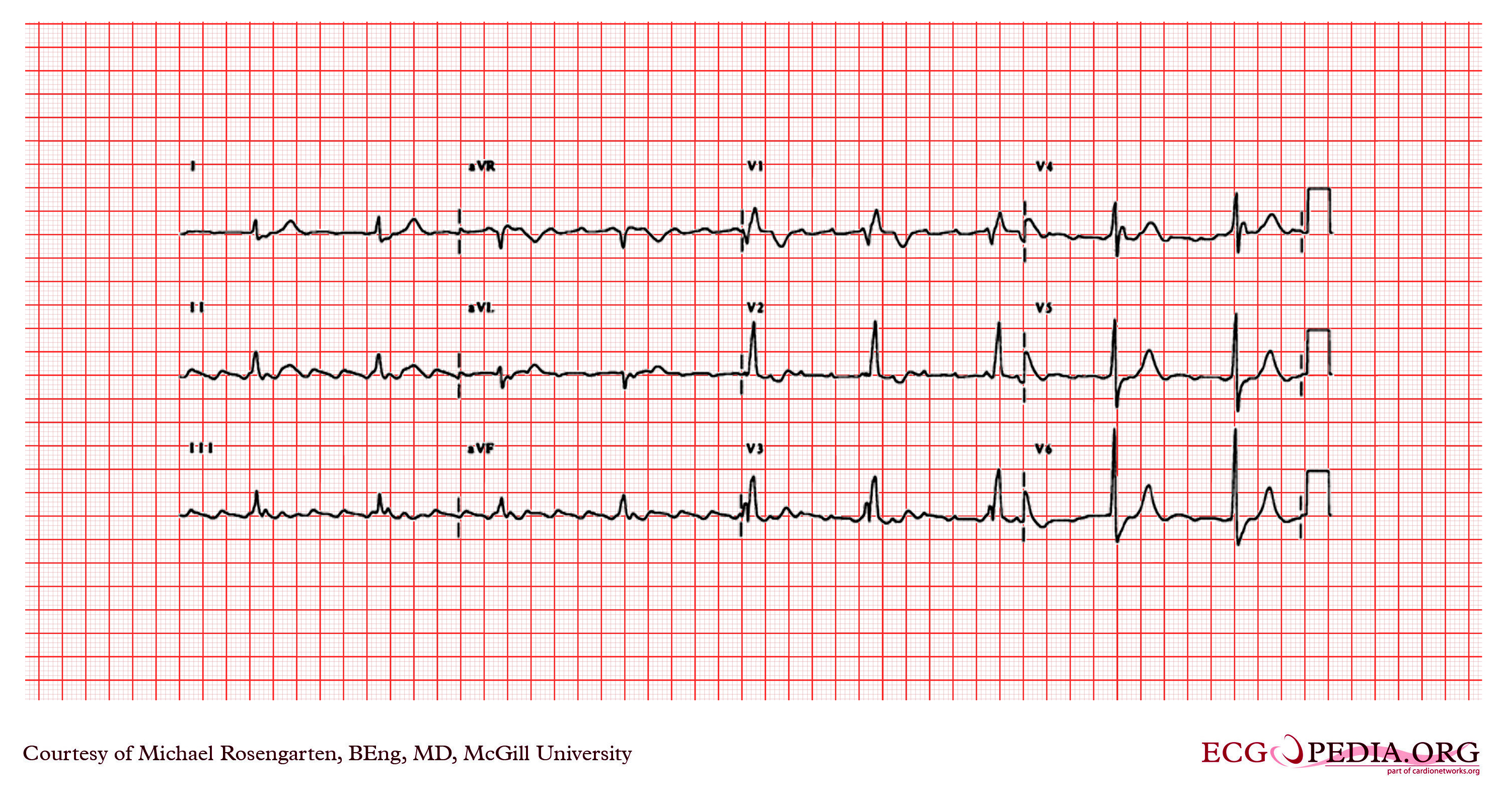Atrial flutter resident survival guide: Difference between revisions
| Line 23: | Line 23: | ||
== Management== | == Management== | ||
=== | ===Diagnosis=== | ||
Shown below is an algorithm summarizing the initial approach to [[atrial flutter]]. | Shown below is an algorithm summarizing the initial approach to [[atrial flutter]]. | ||
Revision as of 17:33, 31 March 2014
Editor-In-Chief: C. Michael Gibson, M.S., M.D. [1]; Associate Editor(s)-in-Chief: Hilda Mahmoudi M.D., M.P.H.[2]; Priyamvada Singh, M.D. [3]
Overview
Atrial flutter is a reenterant arrhythmia, with atrial rates between 240 and 340/min, with a regular ventricular response and a saw tooth pattern on EKG. While it occurs mostly in patients with structural heart disease, it may also occur in patients with normal heart. It presents with palpitations, dyspnea, fatigue, lightheadedness etc. A typical flutter rhythm on EKG consists of absent P waves, saw tooth pattern in leads II, III and aVF, an atrial rate of 240-340 beats/min and an atrial rate:ventricular rate ratio 2:1 (most commonly). The treatment consists of rate control, anticoagulation therapy and cardioversion if the flutter is well tolerated. In those with poorly tolerated flutter or hemodynamic instability direct DC cardioversion is attempted, followed by rate control therapy.
Causes
Life Threatening Causes
Life-threatening causes include conditions which may result in death or permanent disability within 24 hours if left untreated. Atrial flutter can be a life-threatening condition and must be treated as such irrespective of the causes.
Common Causes
- Acute coronary syndromes
- Cardiomyopathy
- Carbon monoxide poisoning
- Congenital heart disease
- Hypertensive heart disease
- Hyperthyroidism
- Mitral valve disease[1] [2]
- Pulmonary embolism
- Myocardial infarction
Management
Diagnosis
Shown below is an algorithm summarizing the initial approach to atrial flutter.
Characterize the symptoms:
Characterize the timing of the symptoms:
❑ Duration
| |||||||||||||||||||||||||||||||||||
Identify possible triggers:
| |||||||||||||||||||||||||||||||||||
Examine the patient: ❑ Tachycardia ❑ Hypotension - suggestive of ventricular dysfunction ❑ Diaphoresis ❑ Evidence of congestive heart failure ❑ Flutter waves in jugular vein ❑ Signs of embolization
❑ Order an ECG
| |||||||||||||||||||||||||||||||||||
Order labs: | |||||||||||||||||||||||||||||||||||
Therapeutic Approach
Shown below is an algorithm summarizing the therapeutic approach to atrial flutter.[3]
Heart Rate Control
Shown below is a table summarizing the list of recommended agents for control of heart rate and their dosages.[4]
| ||||||||||||||||||||||||||||||||||||||||||||||||||||||||||||||||||
Pharmacological cardioversion
| ||||||||||||
Antiarrhythmic Therapy
| |||
Anticoagulation Therapy
Shown below are tables depicting the assessment of risk of stroke and the appropriate anticoagulation therapy among patients with Atrial flutter.[4]
| ||||||||
| ||||||||
Do's
- Class Ic drugs can enhance AV conduction by slowing the atrial rate, so combine them with AV nodal blocking agents such as beta blockers or calcium channel blockers.
- Prefer dofetilide or ibutilide over sotalol or class I agents, though the former have a slightly higher rate of torsades de pointes.
- Prefer direct current DC cardioversion when rapid termination of flutter is needed.
- Prefer overdrive pacing in patients with flutter after cardiac surgery, it also facilitates conversion by drugs.
Don'ts
- Do not use IV ibutilide in patients with structural cardiac diseases or prolonged QT interval or in those with sinus node disease.
References
- ↑ Gutierrez SD, Earing MG, Singh AK, Tweddell JS, Bartz PJ (2012). "Atrial Tachyarrhythmias and the Cox-maze Procedure in Congenital Heart Disease". Congenit Heart Dis. doi:10.1111/chd.12031. PMID 23280242. Unknown parameter
|month=ignored (help) - ↑ Granada, J.; Uribe, W.; Chyou, PH.; Maassen, K.; Vierkant, R.; Smith, PN.; Hayes, J.; Eaker, E.; Vidaillet, H. (2000). "Incidence and predictors of atrial flutter in the general population". J Am Coll Cardiol. 36 (7): 2242–6. PMID 11127467. Unknown parameter
|month=ignored (help) - ↑ "ACC/AHA/ESC Guidelines for the Management of Patients With Supraventricular Arrhythmias—Executive Summary". Retrieved 15 August 2013.
- ↑ 4.0 4.1 Fuster, V.; Rydén, LE.; Cannom, DS.; Crijns, HJ.; Curtis, AB.; Ellenbogen, KA.; Halperin, JL.; Kay, GN.; Le Huezey, JY. (2011). "2011 ACCF/AHA/HRS focused updates incorporated into the ACC/AHA/ESC 2006 guidelines for the management of patients with atrial fibrillation: a report of the American College of Cardiology Foundation/American Heart Association Task Force on practice guidelines". Circulation. 123 (10): e269–367. doi:10.1161/CIR.0b013e318214876d. PMID 21382897. Unknown parameter
|month=ignored (help)
